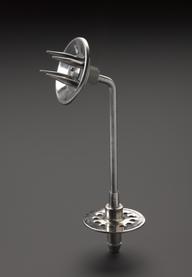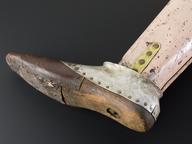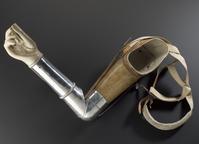Prototype myoelectric hand
Prototype myoelectric hand with space for battery, primarily designed and developed by David Moore as part of the Southampton Hand project at the School of Electronics and Computer Science, University of Southampton, England, 1978-1981
Engineer David Moore aimed to develop a more compact prosthetic hand than had been previously been developed. The drives to power the prosthetic's action were fit into the same size and shape of a large, male human hand. The user operated the prosthetic hand using a controller with their feet. Only specific movements could be programmed into the hand and any changes needed to be rewired.
Begun by Professor Jim Nightingale, Professor of Control Engineering at the University of Southampton in the 1960s, the Southampton Hand project ran for over 50 years. Many engineers interested in developing new types of prosthetic arms worked on the project, each adding their own advances to the project. Inspired by how our brains and hands communicate they aimed to make a prosthetic arm that was easy for users to control. This work led to the first microprocessor controlled prosthetic hands to be used in the outside of clinical trials.
- Materials:
- plastic (unidentified) , textile and metal
- Object Number:
- 2021-1255/1
- type:
- prosthetic hand






